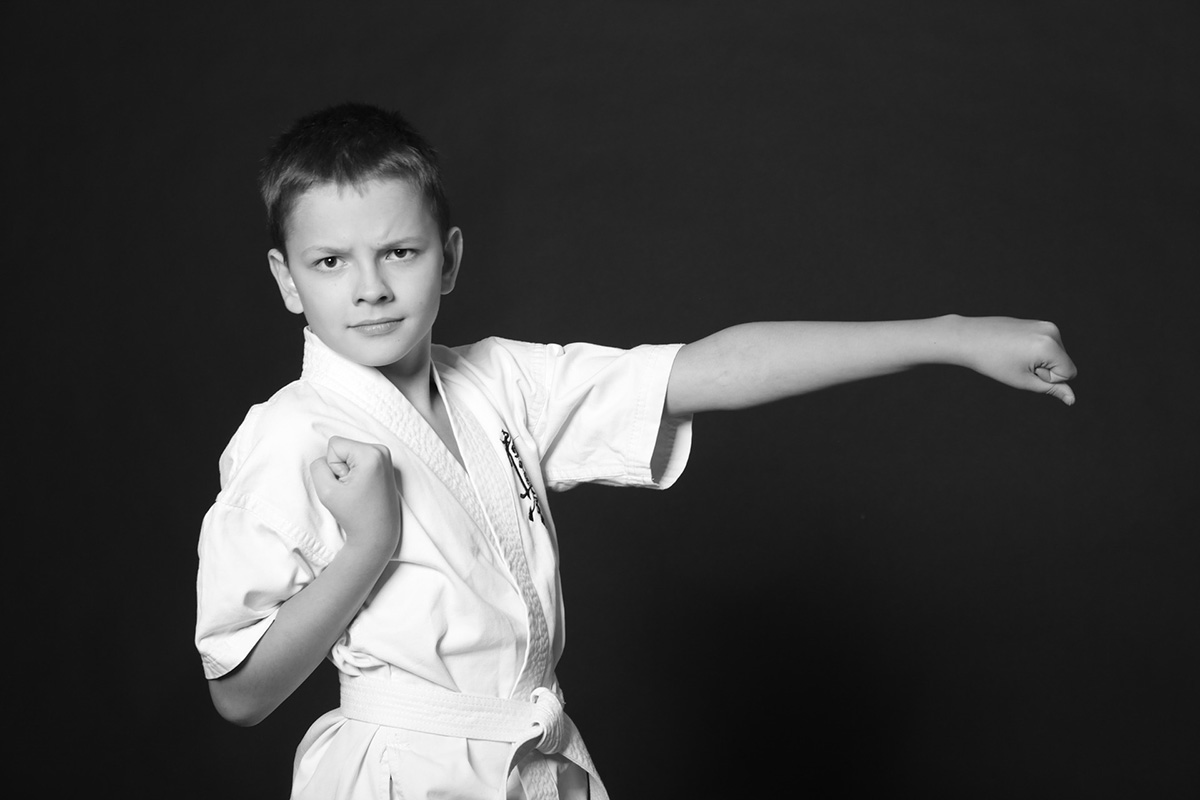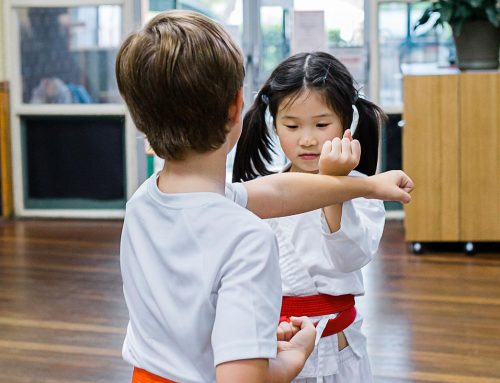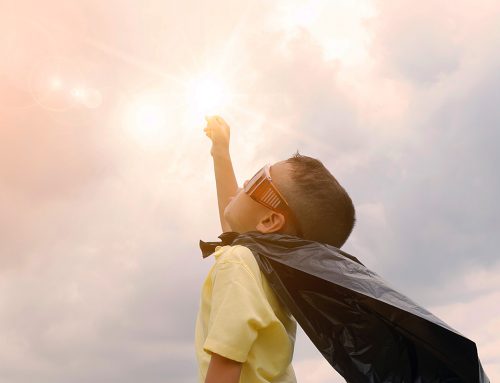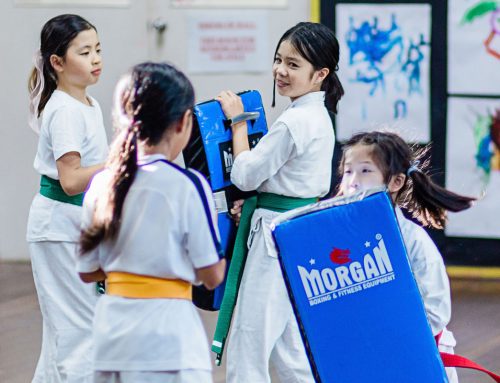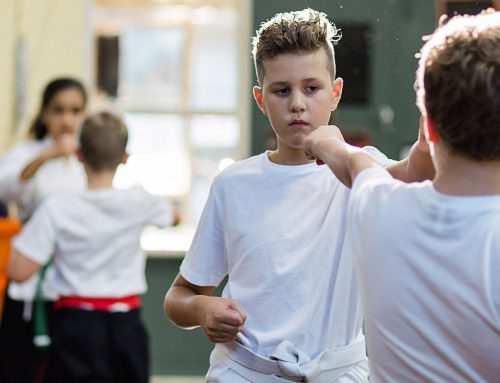The Karate uniform is called a Gi (pronounced ghee). Traditionalists will argue that the correct term is Dogi or Keikogi, depending on your point of view. In Japanese culture do means the way and keiko means practice so calling your uniform a dogi means the cloth of the way and calling your uniform a keikogi means the cloth of practice.
In actual fact, we should refer to our uniform as a karategi if you practice karate and a judogi if you practice judo, and so on.
Despite the gi looking like the kimono it is incorrect to refer to the uniform in this way. The kimono is the traditional Japanese garment and wearing one is a highly ritualized tradition and is associated with endless rules of etiquette.
The gi is made from cotton of varying thicknesses although some practitioners now wear gi made from the new moisture wicking high-tech polyester material, which is breathable and non-absorbent.
Most students wear a lightweight cotton gi of about 6 to 8oz thickness. It is durable enough but doesn’t stand up to much grappling.
The jacket of the gi crosses left side over the right side. The only exception of this rule is when the undertaker dresses the body for burial and the jacket is crossed right over left.
The pants of the gi normally have an elasticated waist making it easy for kids to wear but a traditional gi will have the old style drawstring closure.
The psychology behind wearing a gi to class
Yes, there is science behind wearing a gi and it is closely linked to mental health.
Wearing a uniform, or in this case a gi, has many benefits:
- It promotes commonality among the students
- It fosters a sense of pride
- It sets boundaries and helps participants see the dojo and karate class as a working environment
- It gives a sense of community, confidence, respect and discipline
Students respond positively to symbols such as flags and badges bearing the dojo sign and uniforms, which give them a sense of belonging, membership and above all, a sense of identity.
The practicalities of wearing a gi to class
The above information deals with the more traditional karategi of a jacket and pants but really a karategi is a uniform, usually decided on by the Sensei, that is worn to class for karate practice. Therefore, the karategi of today’s Dojo can be anything from traditional gi to track pants and tee shirt as long as everyone wears the same outfit.
Personally I prefer the traditional jacket and pants gi but in our dojo we have recently transitioned to pants and tee shirt. The kids find this outfit easier to wear and the tee shirt is less restrictive for their Self Defence training.
Whatever “uniform” you wear it should be comfortable, allow for freedom of movement and be durable. It should also be the same as everyone else and so promotes a feeling of belonging to the dojo.
The importance of wearing the belt
In my dojo I introduced a grading system many years ago that was simple and yet promoted a feeling of self worth and achievement for the grading students.
Wearing the belt to class is hugely important as it is recognition of effort and improvement plus it shows the students what can be achieved with commitment and application, two of the biggest things in a karate class.


